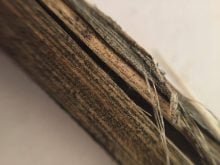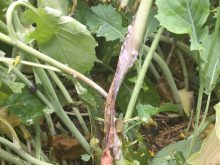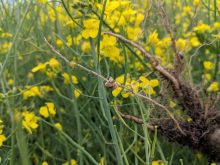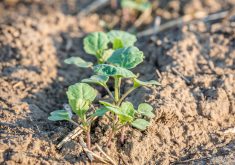Canola has been called a Canadian success story, and for good reason. It’s estimated the country’s canola value chain generates nearly $30 billion in economic activity annually.
But even the best success stories sometimes must change with the times. That’s why the agriculture industry spends millions of dollars each year to develop new canola varieties that can thrive despite ever-evolving climate conditions and disease pressures.
Grainews spoke with representatives from some of the country’s leading seed companies during this year’s Ag in Motion farm show in Langham, Sask., to find out how new hybrids are developed and what new products are in the development pipeline. Here’s what they had to say.
Read Also
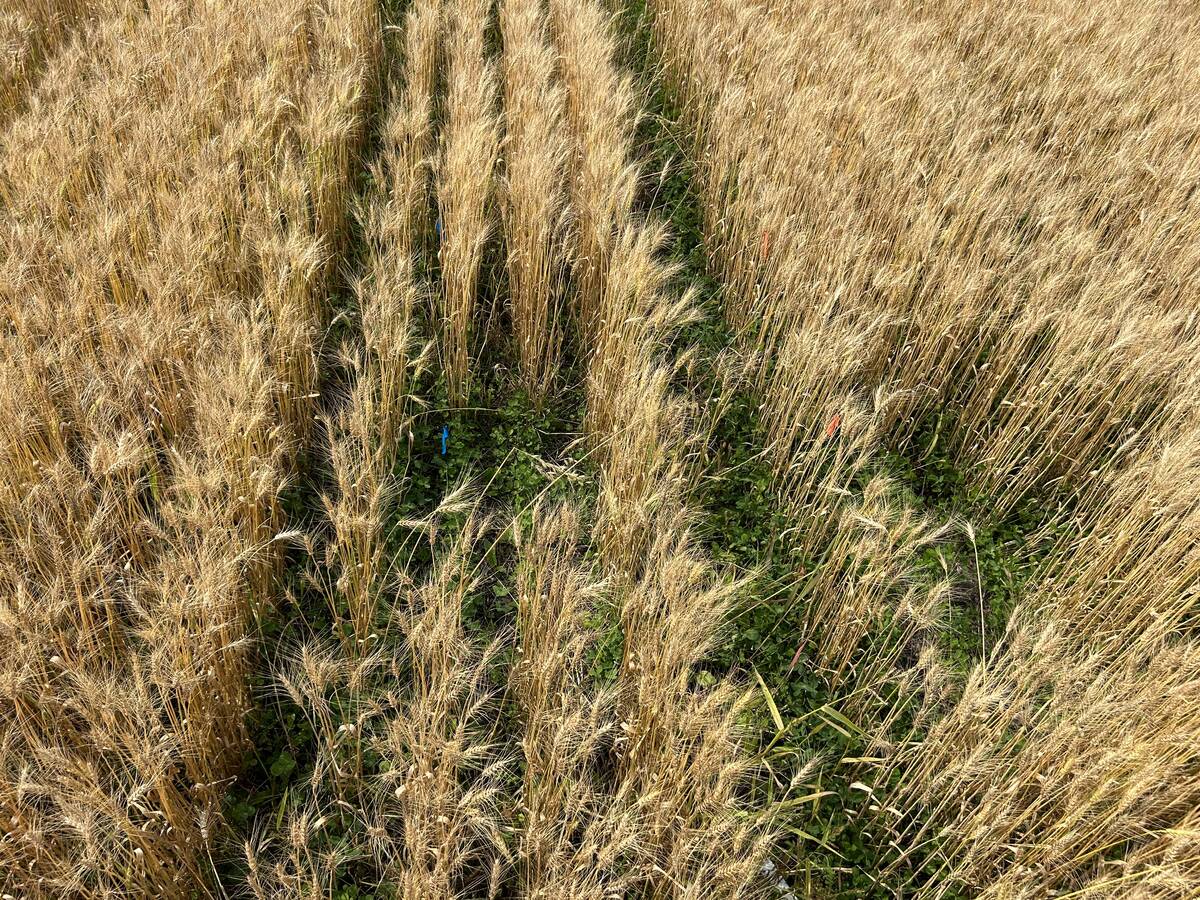
Cover crops seeded with wheat show no yield penalty in Manitoba trials
Research at Manitoba Diversification Centres shows farmers can seed legumes with spring wheat to establish cover crops without hurting yield, even in dry years.
Unique opportunity
Courtney Welch, canola product manager for Winnipeg-based Canterra Seeds, says her company’s process for developing new varieties is different from other businesses. It doesn’t have its own breeding program and works with several genetics partners that license their products to Canterra.
“That provides us a really unique opportunity to pick the best ones from different breeding programs.”
Welch says clubroot (both first and second generation) resistance is a top priority when selecting varieties. It’s common for breeding companies to look to other crop types for genes that have clubroot resistance and then use different breeding techniques to bring resistance to a spring canola product.
Those efforts can produce hundreds of new varieties that are tested in a growth room and in outdoor nurseries to determine which ones will make the cut.
Welch likens the process to a funnel. It can start with as many as 1,000 varieties, which are then reduced to 200 the following year. That group is then slashed to as few as five, and the variety that has the best test results is commercialized.
Canterra is also unique in being farmer owned, says Welch, so growers have a say in the company’s selection priorities when looking at new canola hybrids.
“We have a really unique position where we have access to all of those brilliant minds in the field and (they) can say this is actually what we need and it’s not just us sitting in an office somewhere making these decisions,” she adds.
Canterra’s current portfolio is focused primarily on three canola trait platforms: Clearfield, TruFlex and LibertyLink. It has three new LibertyLink varieties in development that each offer different maturities. All three have the company’s PodProtect trait as well as first- and second-generation clubroot and blackleg resistance.
The one showing the best test results will be commercialized as CS4100 LL as soon as next year.
The company also has two new TruFlex varieties in development that offer the PodProtect trait and a full disease package, as well as one Clearfield variety featuring the PodProtect trait.
“With the pod shatter trait, it’s going to protect the yield potential that’s there in those genetics. With that, it gives you some flexibility come harvest time so you know you can go in and straight cut that really confidently,” Welch says.
Working relationships
Manitoba-based BrettYoung Seeds doesn’t have its own breeding program. Instead, it has cultivated working relationships with several different breeding organizations.
In the case of canola, BrettYoung works primarily with German-based DL Seeds to develop new hybrids. BrettYoung recently signed an agreement with DL Seeds that gives it the first choice of any new canola products that come out of the DL Seeds breeding pipeline in Canada.
Eric Gregory, BrettYoung’s canola product line manager, says one benefit of the company’s relationship with DL Seeds is that it works in many parts of the world and has access to a huge selection of germplasm and traits.
It also enjoys a two-way dialogue that allows the Manitoba seed company to discuss the particular needs of farmers in Western Canada.
“We have regular monthly meetings with people at DL Seeds. Aside from business updates, volume sold and that kind of thing, we often talk about the breeding pipeline and where we think they need to focus their breeding efforts. We give them our feedback and they give us their feedback,” says Gregory.
Early on, his company’s canola breeding efforts were primarily focused on yield and maturity performance. While that is still very much the case, there is now more focus on pod shatter technology and other traits such as clubroot resistance after the disease emerged as a major concern in many parts of Western Canada.
“That’s been one of the big advantages of DL’s program … their parent company sells canola in areas of the world where clubroot has been an issue for a long time and so they have very deep roots in alternative and different sources of genetic resistance that you can bring in and use to breed here.”
Gregory says 95 per cent of the new canola varieties the company has in development feature pod shatter tolerance as well as next-generation clubroot resistance. There are a few new LibertyLink hybrids including one that could be released commercially as soon as this fall that is earlier maturing with pod shatter tolerance and next-generation clubroot protection.
The company also recently released two new TruFlex canola hybrids, BY 6216TF and BY 6217TF, which feature a range of maturities, pod shatter tolerance, next-generation clubroot protection and multigenic blackleg protection.
Grower input
Eric Comte, campaign marketing manager for Dekalb, says his company uses a collaborative process with local growers when it brings forward a new canola variety with a resistance package for clubroot or other diseases. For example, a primary company focus in Manitoba is verticillium stripe, which has become a major concern for many growers in that province.
“The incidence of the disease has been there for some time but the severity has increased and we’re continuing to develop some communications to make sure we provide our growers with information to make sure they can select the right package for their farm depending on what their top priorities are for their farm,” he says.
All products in Dekalb’s development pipeline will include a source of clubroot resistance. Comte says the company is excited about the new products because they will provide growers with another option in areas where clubroot is a major concern.
“It will allow them to continue to have canola in their rotations and continue to provide them with a solution. They’ll be able to continue to grow a canola hybrid that will perform regardless of whether the pathogen is in their soil,” he says.
Dekalb is also looking to add a verticillium strip resistance package to all new canola varieties.
What farmers are looking for
Bruce Harrison, senior director of seed innovation for Nutrien Ag Solutions, says his company’s process to develop new canola hybrids begins with genetic understanding. That allows the company to build a package that delivers “what farmers are looking for: yield and yield stability across geographies and environments.”

Another priority, he says, is assembling a multigenic clubroot and complementary blackleg package that helps alleviate disease concerns.
The next step is developing experimentals with the latest genetics and then advancing them from small plot research to strip trials to see how they perform in a field setting. They are also compared with known check varieties.
While yield and yield improvements are a big part of testing, Harrison says yield stability across different environments must be considered.
“We’ve seen it this year as much as ever before, where you see really good environments and some really tough environments, and we’re wanting to make sure our genetics consistently perform across each of those environments,” he says.
In addition to the glyphosate herbicide-tolerant segment, Nutrien is focused on breeding new canola varieties in the LibertyLink trait sector. That includes ensuring all major herbicide tolerance concerns are addressed as well as key agronomic traits like shatter tolerance and disease resistance.
“It’s about protecting the yield. And part of that is clubroot resistance for those that are most affected by that disease, but also blackleg resistance because it’s still a major challenge for farmers across Western Canada…. So, we’re always adding that as a key element to all the hybrids that we advance.”
Harrison says Nutrien has several new canola varieties in its development pipeline that will move into commercial production during the coming year. Those new varieties including multigenic clubroot resistance and background genetics for blackleg resistance in a package he says will provide widespread protection.





